How to Make a Pros and Cons List for Moving?
Making a pros and cons list for moving is one of the best ways to make a smart choice about your big move. This simple tool helps you see all the good and bad parts of moving so you can decide what's best for you and your family.
Moving is a big life change. It affects your job, family, and daily life in many ways. A pros and cons list helps you think through all these changes before you make your choice. In this guide, you'll learn how to make this list step by step, what to include, and how to use it to make the right call about your move.
Why Making a Pros and Cons List for Moving Really Helps
Making big choices can feel scary and hard. When you're thinking about moving, there are so many things to consider. Should you move for that new job? Is it worth leaving your friends behind? Will the kids be happy in a new school? These questions can make your head spin.
A pros and cons list cuts through the confusion. It puts everything down on paper so you can see it clearly. According to the U.S. Census Bureau, about 26.5% of people who moved in recent years cited family-related reasons, while others moved for housing, employment, or other factors. Many families use simple tools like this to help make their choice.
The list works because it helps you think with your head, not just your heart. When you're excited about a new adventure or scared about leaving home, emotions can cloud your thinking. Writing things down helps you see the facts more clearly.
The Science Behind Better Decisions
Decision experts know that listing pros and cons works well. It helps you avoid making quick choices you might regret later. Studies show that people who use structured decision-making tools are three times more likely to make good choices compared to those who just go with their gut feeling.
When you take time to think through both sides, you give yourself space to cool down from strong emotions. This leads to better choices that you'll feel good about later.
How to Set Up Your Moving Pros and Cons List
Creating your list is easy. You just need paper and a pen, or you can use your computer or phone. Here's how to get started:
Step 1: Write Your Moving Question at the Top
Start by writing exactly what you're trying to decide. Be clear and specific. Instead of just writing "Should I move?", try something like:
- "Should we move from Toronto to Calgary for my new job?"
- "Should I move closer to mom and dad in Edmonton?"
- "Should we move to a bigger house in the same city?"
Step 2: Make Two Columns
Draw a line down the middle of your paper. Label the left side "Pros" (good things) and the right side "Cons" (bad things). You can also call them "Good" and "Bad" or "Reasons to Move" and "Reasons to Stay."
Step 3: Start Brainstorming
Think about your move and write down everything that comes to mind. Don't worry about organizing yet. Just get all your thoughts on paper. You can sort them later.
Some people like to write one pro, then one con, back and forth. Others prefer to write all the pros first, then all the cons. Do whatever feels right for you.
What to Put on Your Moving Pros List
The pros side is where you write all the good things about moving. Here are the main areas to think about:
Career and Money Benefits
Moving often opens new doors for your job and money. According to U.S. Census Bureau data, employment-related reasons have consistently been a major driver of geographic mobility. Think about:
- Better job opportunities in the new place
- Higher pay or better benefits
- Lower cost of living means your money goes further
- Tax benefits in some states or provinces
- More stable work in your field
Better Quality of Life
Moving might improve your daily life in many ways:
- Nicer weather year-round
- Less traffic and shorter drives to work
- Better schools for your children
- More fun activities and things to do
- Cleaner air and less pollution
- Safer neighborhoods
Personal and Family Reasons
Sometimes the best reasons to move are about relationships:
- Living closer to family members
- Being near lifelong friends
- Following a romantic partner
- Starting fresh in a new place
- More space for your growing family
Housing and Living Benefits
Your new home might be much better:
- Bigger house for the same price
- Better neighborhood with nice parks
- Newer home with modern features
- No more apartment living - you can have a yard
- Better schools in the area
What to Put on Your Moving Cons List
The cons side covers all the challenges and downsides of moving. Be honest about these:
Money Concerns
Moving costs money, and living somewhere new might too:
- Moving expenses can add up quickly, especially for long-distance moves
- Deposits for new home and utilities
- Higher cost of living in the new place
- Potential pay cut or job uncertainty
- Travel costs to visit family and friends
Leaving People Behind
This is often the hardest part of moving:
- Missing close friends and family
- Research published in the National Library of Medicine shows that residential mobility during childhood can have lasting effects on mental health and academic performance
- Kids leaving their friends and activities
- No more support network nearby
- Feeling lonely in a new place
Starting Over Challenges
New places mean new everything:
- Finding new doctors, dentists, and services
- Learning about the new area
- Making new friends as an adult
- Kids adjusting to new schools
- Different weather you're not used to
Career and Practical Issues
Work and daily life might get harder:
- Job market might not be as good as expected
- Longer commute in the new city
- Different job culture or work style
- Having to get new licenses or certifications
Advanced Tips for Making Your List Even Better
Once you have your basic list, you can make it more helpful with these tips:
Give Each Item a Score
Not all pros and cons are equal. Some matter more than others. Give each item a score from 1 to 10 based on how important it is to you.
For example:
- "Better weather" might be a 6/10 if you like nice weather but can live with cold
- "Kids' education" might be a 10/10 if you have school-age children
- "Missing friends" might be an 8/10 if you have a tight friend group
Add up the scores on each side to see which one wins.
Think About Timing
Some pros and cons might change over time. Ask yourself:
- Will this matter in 5 years?
- Is this a short-term problem with a long-term benefit?
- Can I fix this con later?
For example, missing friends is hard at first, but you can make new friends over time. Job opportunities might get better as you gain experience in the new place.
Get Input from Others
Talk to family members, especially if the move affects them. Each person might see different pros and cons. Kids might worry about different things than adults.
You can also talk to people who have made similar moves or who live where you're thinking of going. They can help you think of pros and cons you might have missed.
Consider Your Values
What matters most to you in life? If family is your top priority, being far from relatives is a big con. If career growth is most important, job opportunities might outweigh other concerns.
Make sure your list reflects what you truly care about, not what you think you should care about.
Common Mistakes People Make
Avoid these problems when making your list:
Being Too General
"It'll be nice" isn't specific enough. Instead, write "Better weather means we can be outside more" or "Lower housing costs mean we can save $500 per month."
Only Thinking Short-Term
Consider how things might change over time. A high cost of living might be worth it if job opportunities are better long-term.
Forgetting Hidden Costs
Moving costs more than just hiring professional Edmonton movers. Think about:
- Time off work for the move
- Replacing things that don't make the move
- Higher insurance or other costs in the new place
Not Including Everyone
If you have a family, make sure everyone's concerns are on the list. What matters to your teenager might be very different from what matters to you.
Using Your List to Make the Final Decision
Once your list is complete, it's time to make your choice. Here's how:
Look at the Big Picture
Don't just count pros and cons. Look at the whole picture. One really important pro might outweigh several small cons.
Trust Your Gut Too
After you've done all this thinking, how do you feel? Sometimes your instincts can guide you even when the list is close.
Make a Plan B
What if the move doesn't work out? Having a backup plan can make the decision feel less scary. Maybe you can always move back, or maybe you'll give it two years to see how it goes.
Set a Timeline
Don't rush, but don't wait forever either. Give yourself a deadline to decide, like "I'll decide by the end of the month." This prevents endless back-and-forth thinking.
Special Considerations for Different Types of Moves
Different moves have different challenges. Here's what to think about for each:
Moving for Work
If you're moving for a job, consider:
- Is this job secure long-term?
- What happens if the job doesn't work out?
- Will this move help your career even if this specific job ends?
- Does the company help with moving expenses?
Moving with Kids
About 25% of families move to access better educational opportunities for their children. The American Academy of Child and Adolescent Psychiatry notes that moving can be especially hard on children and adolescents, with frequent moves linked to more problems at school. When kids are involved:
- How will this affect their education?
- Are they at an age where moving is easier or harder?
- What activities and friendships will they lose?
- What new opportunities will they gain?
Moving for Family
If you're moving to be closer to family:
- Is this a permanent need or temporary?
- How much help do your family members actually need?
- Will being closer improve or complicate relationships?
Retirement Moves
Senior movers have special needs to consider:
- Healthcare quality in the new area
- Cost of living on a fixed income
- Access to senior activities and services
- Distance from adult children and grandchildren
When Your List Doesn't Give a Clear Answer
Sometimes your pros and cons list comes out pretty even. When this happens:
Wait a Little Longer
If you're not sure, it might not be the right time to move. Sometimes waiting six months or a year can make the answer clearer.
Do More Research
Maybe you need more information. Visit the new place if you can. Talk to more people. Research schools, jobs, or housing more deeply.
Consider a Trial Run
If possible, try living in the new place for a short time. Rent for a few months before making a permanent move. This can turn unknown cons into known facts.
Creating Your Action Plan
Once you decide to move, your pros and cons list can help you plan
Address the Cons
Look at your cons list and see which ones you can fix or make easier:
- If missing friends is a big con, plan regular visits or video calls
- If the cost is concerning, budget carefully and look for ways to save
- If kids are worried about new schools, research programs and activities they'll enjoy
Maximize the Pros
Make sure you get the full benefit of your pros:
- If you're moving for career opportunities, network actively in your new city
- If better weather was a pro, plan outdoor activities to enjoy it
- If lower cost of living was important, stick to your budget so you actually save money
Prepare for Challenges
Your cons list shows you what will be hard. Prepare for these challenges:
- Research local Edmonton movers if you're planning a move in Alberta
- Set aside extra money for unexpected costs
- Plan how you'll meet new people and build community
Sample Pros and Cons List for Moving
Here's what a real pros and cons list might look like:
Should we move from Calgary to Edmonton for my new job?
PROS:
- 20% pay increase ($15,000 more per year) - Score: 9/10
- Better job advancement opportunities - Score: 8/10
- Lower housing costs - can afford bigger home - Score: 7/10
- Closer to my parents (2 hours vs 8 hours) - Score: 8/10
- Good schools for kids - Score: 9/10
- Company pays for moving expenses - Score: 6/10
CONS:
- Kids leaving their friends and activities - Score: 8/10
- Wife needs to find new job - Score: 9/10
- Leaving our support network - Score: 7/10
- Don't know anyone in Edmonton - Score: 6/10
- Colder winters - Score: 4/10
- Moving stress and time - Score: 5/10
In this example, the pros score higher and the family decides the move makes sense, especially with the pay increase and being closer to grandparents.
Tools and Resources to Help
You don't have to make your list alone. Here are helpful resources:
Online Templates
- Simple pro/con templates you can download
- Weighted decision-making spreadsheets
- Family decision worksheets
Professional Help
- Career counselors can help with job-related moves
- Financial advisors can help with money decisions
- Professional moving consultants can explain costs and logistics
Research Tools
- City comparison websites from trusted government sources
- School rating sites
- Cost of living calculators
- Crime statistics and neighborhood information
Making Peace with Your Decision
No choice is perfect. Even after careful planning, you might have some regrets or worries. This is normal. Remember:
Focus on What You Can Control
You can't control everything about your new city, but you can control how you approach the move. Stay positive and work to make the most of your choice.
Give It Time
Most people need at least six months to a year to feel settled in a new place. Don't judge your decision too quickly.
Stay Connected
Keep in touch with friends and family from your old home. Modern technology makes this easier than ever.
Be Open to New Experiences
Your pros list probably included some new opportunities. Stay open to trying new things and meeting new people.
Final Thoughts
Making a pros and cons list for moving is a smart way to make one of life's biggest decisions. It helps you think clearly about all the ways a move might affect your life, work, and family. By writing everything down, you can see the whole picture instead of just focusing on one or two big factors.
Remember that there's no perfect choice. Every move has both good and bad parts. The goal is to make sure the good parts are more important to you than the bad parts. Take your time, be honest about what matters to you, and don't be afraid to ask for help from family, friends, or professional movers who understand the process.
Your pros and cons list is just a tool to help you think. In the end, you know your family and situation best. Trust yourself to make the right choice, and then commit to making your decision work out well, whatever you decide.
Whether you're planning a local move within Edmonton or considering a cross-country adventure, taking time to make this list will help you feel confident about your choice. And when moving day comes, you'll know you made the best decision possible with the information you had.



